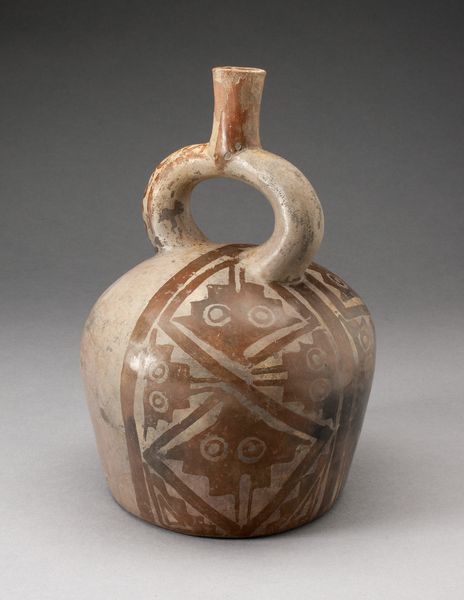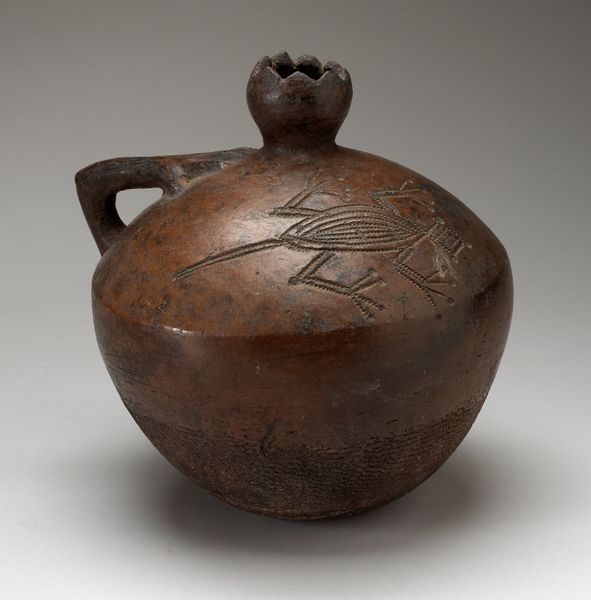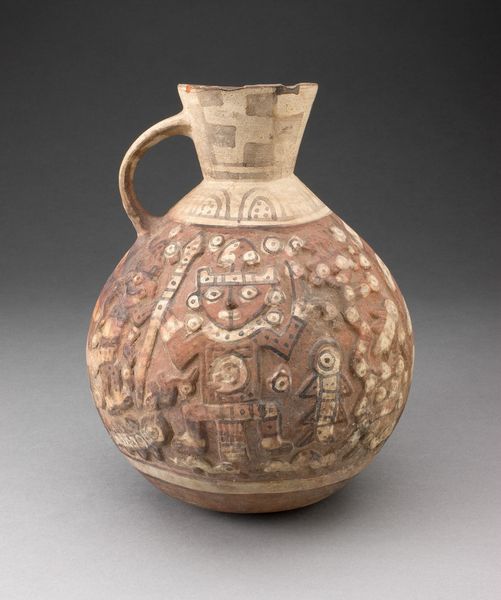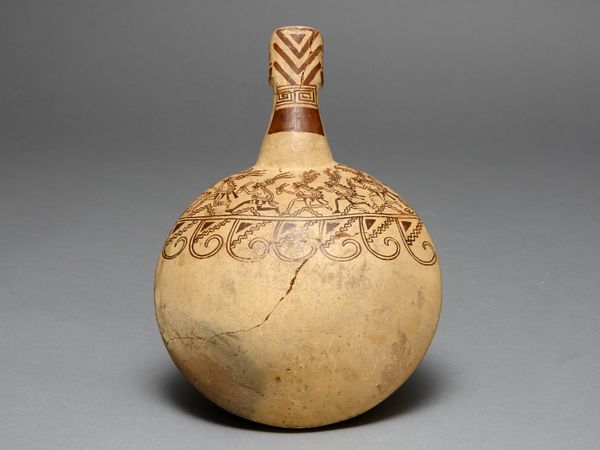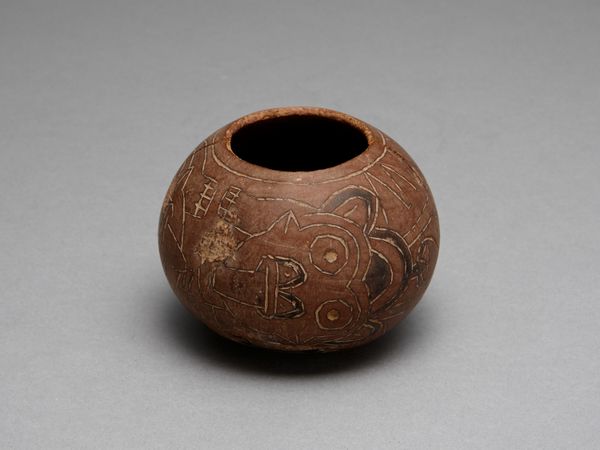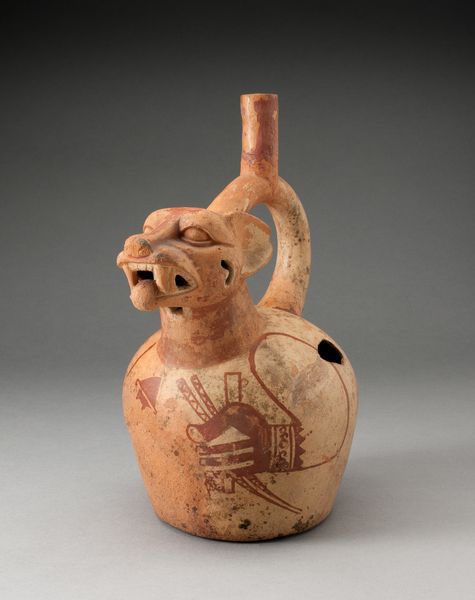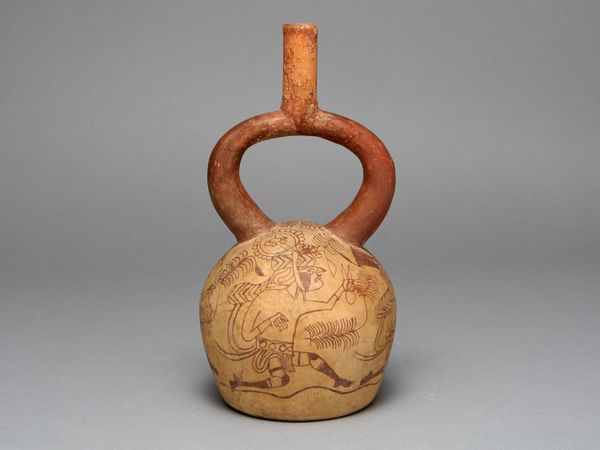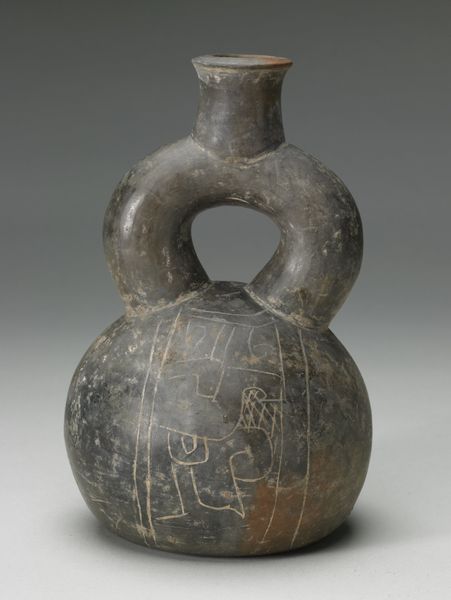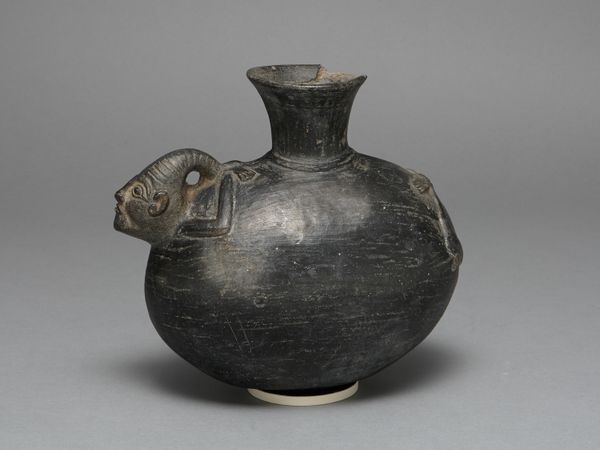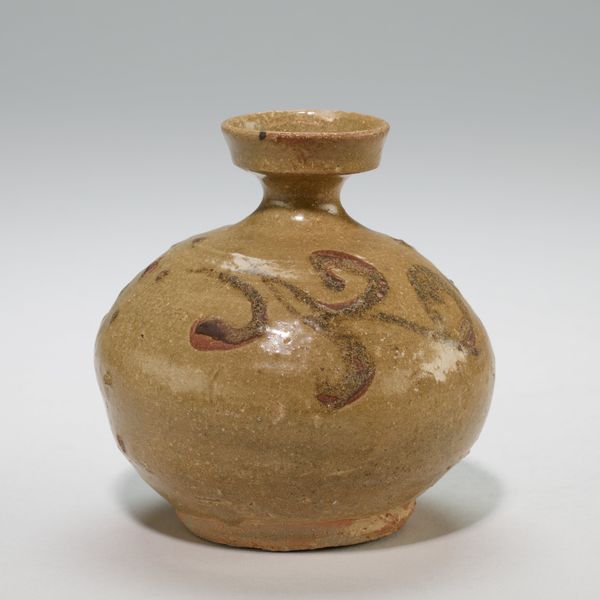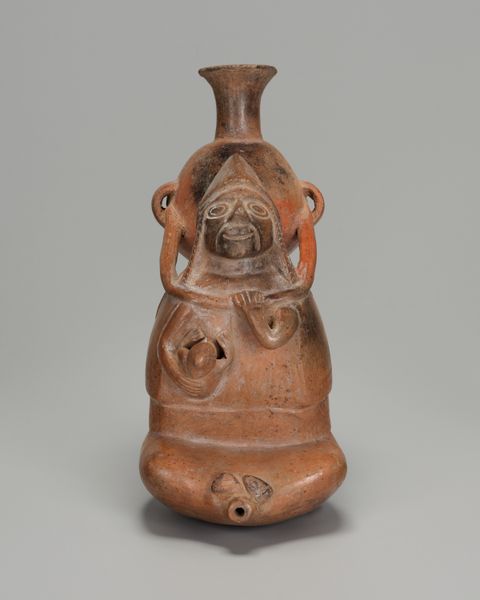
relief, ceramic, terracotta
#
narrative-art
#
relief
#
ceramic
#
figuration
#
terracotta
#
indigenous-americas
Dimensions: 16.2 × 13.7 cm (6 3/8 × 5 3/8 in.)
Copyright: Public Domain
Curator: Right now we're looking at a ceramic jug, probably used for holding water or chicha. What really grabs me is the craftsmanship involved. Curator: It feels ancient and incredibly detailed! I can sense stories woven into every curve of that rounded shape. Curator: This is a piece from the Moche culture, dating roughly from 100 to 500 AD. What’s exciting is that it’s not just any jug – it features relief carvings. Consider the labour—digging the clay, forming the vessel, carving the intricate narrative… and then firing the thing! Curator: Exactly. When I look at the imagery depicting a fishing scene, I start thinking about Moche society and the critical role that fishing and water sources played in the development of their civilization, but also in their relationship to nature, don’t you think? Curator: Absolutely, and there's a level of sophistication to the production itself. The choice of materials and the mastery over them signifies that value. Ceramic production was a crucial craft within the Moche economy and religious practice. The elite probably controlled the means. Curator: It definitely speaks to hierarchical structure. Looking closely at the figures in the relief, their posture and clothing likely signify social roles within the Moche community. Curator: I wonder, were molds used for consistency in production? And were there workshops where specialization occurred in certain design motifs, for example the depiction of those specific fish and birds? We need to think of this artwork as product of collective ingenuity. Curator: I agree! There is probably evidence about specific knowledge of the environment or belief systems, and how the elite of this society codified it into this type of visual vocabulary. It shows the deep ties that indigenous societies of the Americas developed between power structures, natural resources and cosmology. Curator: Exactly. In studying objects like this, we are gaining valuable information about economic practices, technological prowess, and specialized skills. Curator: This pot allows us to see this long-lost community not as a homogenous society, but through the actions of men and women. Curator: Absolutely. It’s tangible, durable evidence. Curator: When we discuss the social relations embedded in materials, labor, production of Indigenous art, we resist a tendency to create cultural hierarchies. Curator: Thinking about its physical endurance, this jug represents both the fragility of culture and its incredible capacity to endure. Curator: Absolutely. Thinking of art as an act of cultural survival offers fresh perspectives into Moche art and its connection with contemporary indigenous practices.
Comments
No comments
Be the first to comment and join the conversation on the ultimate creative platform.
